-
Posts
2.067 -
Joined
-
Last visited
-
Days Won
52
Posts posted by Genava55
-
-
There is also evidence in Tacitus account for pastoralist nomadism in their societies.
-
@Nescio do you know the Adoulis inscription?
QuoteThis inscription, the text of which survives thanks to the copy made of it at Adoulis on the Arabian Gulf by the sixth-century monk Cosmas Indicopleustes, commemorates the campaign made by Ptolemy III at the opening of his reign. His opponent was Seleucus II, who had himself just come to the throne. The conflict, the Third Syrian War, is known also as the Laodikean war, after Laodike, whom Antiochus II had set aside in order to marry Berenike, daughter of Ptolemy II (cf. 24-25). After the death of Antiochus II, Laodike's son succeeded him as Seleucus II, and she forthwith saw to the murder of Berenike and her infant son at Antioch. Ptolemy, too late to save his sister (cf.а 27), immediately undertook a march into the Asian heartland of the Seleucid realm. This campaign is referred to also by Jerome in his commentary on the Book of Daniel (11.8): Уand he (Ptolemy) came with a great army, and entered into the province of the king of the north, i.e., Seleucus called Callinicus, who was reigning in Syria with his mother Laodice, and dealt masterfully with them and obtained so much as to take Syria and Cilicia and the upper parts across the Euphrates, and almost all Asia. And when he heard that a rebellion was afoot in Egypt, plundering the kingdom of Seleucus he took. 40,000 talents of silver and costly vases, and 2,500 images of the gods, among which were those Cambyses had carried away to Persia when Egypt was taken.
Great King Ptolemy, son of King Ptolemy and Queen Arsinoe the Brother and Sister Gods, the children of King Ptolemy and Queen Berenike the Savior Gods, descendant on the paternal side of Herakles the son of Zeus, on the maternal of Dionysos the son of Zeus, having inherited from his father the kingdom of Egypt and Libya and Syria and Phoenicia and Cyprus and Lycia and Caria and the Cyclades islands led a campaign into Asia with infantry and cavalry and fleet and Troglodytic and Ethiopian elephants, which he and his father were the first to hunt from these lands and, bringing them back into Egypt, to fit out for military service. Having become master of all the land this side of the Euphrates and of Cilicia and Pamphylia and Ionia and the Hellespont and Thrace and of all the forces and Indian elephants in these lands, and having made subject all the princes in the (various) regions, he crossed the Euphrates river and after subjecting to himself Mesopotamia and Babylonia and Sousiane and Persis and Media and all the rest of the land up to Bactriane and having sought out all the temple belongings that had been carried out of Egypt by the Persians and having brought them back with the rest of the treasure from the (various) regions he sent (his) forces to Egypt through the canals that had been dug ---.
http://www.columbia.edu/itc/classics/bagnall/3995/readings/b-d2-1c.htm
Another question, in this article the author wrote: "Notice the absence of the turret, which could only be used on Asian elephants (Elephas maximus)." Do you think it is correct?
https://www.mdpi.com/2076-0752/8/4/160/htm
Edit: with the terracotta found in Pompei from your excerpt of Bar-Kochva's book, I am not sure it is correct.
18 hours ago, Nescio said:Moreover, size is not everything. Pygmies (<150 cm) are not less human than Bosnians (>180 cm). And chihuahuas and St Bernhards belong to the same subspecies (Canis lupus familiaris, the domestic dog).
That makes sense. It is the case with ancient horse as well. Iron age horses were smaller than medieval and modern ones but were actually belonging to the same species and are not related to Przewalski's horse or to Exmoor ponies.
-
Elephant Size in Antiquity - DNA Evidence and the Battle of Raphia
To give an idea of the actual size of an Indian elephant:
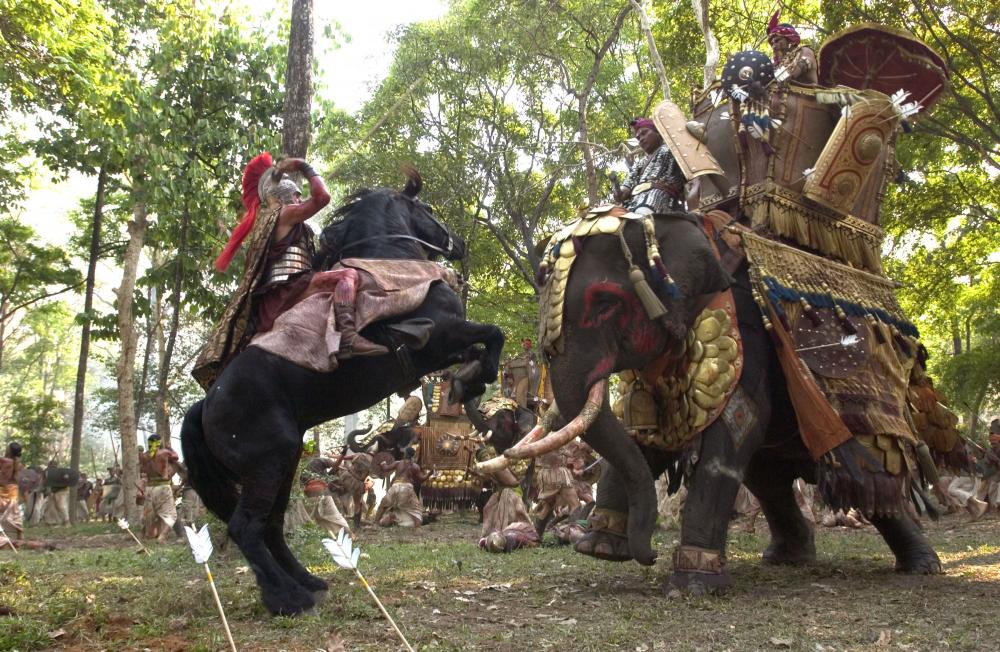
-
 1
1
-
-
1 hour ago, wowgetoffyourcellphone said:
I'm slowly inceptioning the idea that Empires Ascendant should cover the entire classical time period instead of stopping at 1 BC
Well I agree in general with your suggestion but isn't it already the idea? 0 A.D. Empires Ascendant to be the base game and expansions to add new civ from 1 to 500 AD?
QuoteIn future Expansion Packs, we hope to expand the number of available cultures by incorporating additional civilizations from 1 A.D. to 500 A.D. Possible civilizations include the Germanics, Vandals, Sarmatians, Late Rome, Imperial Rome, Eastern Rome (Early Byzantines), Saxons, Parthians, Huns, Dacians, and the Goths.
The day 0 A.D. reaches the beta phase it would be an interesting topic and debate but until then... it is pointless.
-
 1
1
-
-
In Bar-Kochva (1976) on the Seleucid Army:
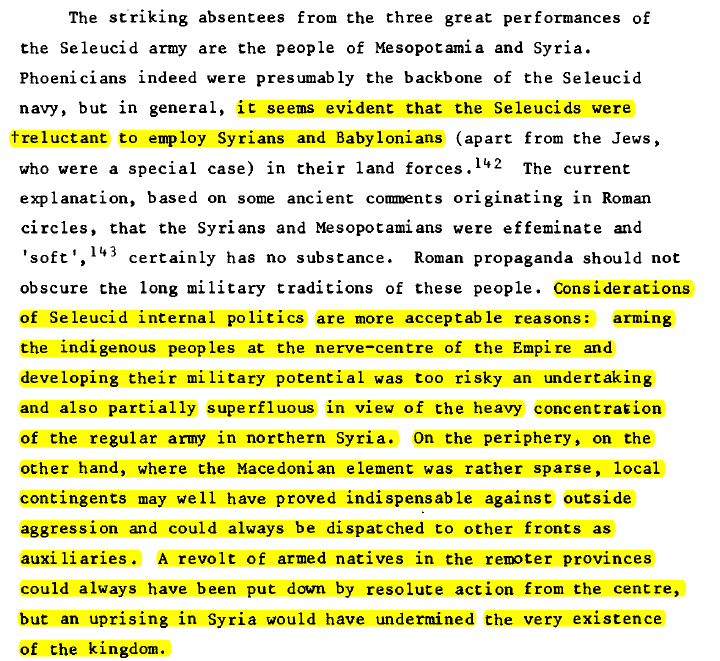
So it seems that Persian archers and Neo-Cretan archers are the most credible possibilities.
-
 2
2
-
-
I remember this thread on twcenter:
http://www.twcenter.net/forums/showthread.php?778511-Syrian-Archers-and-Europa-Barbarorum-2
Edit: in EB2 the Seleucids can recruit them
https://europabarbarorum.fandom.com/wiki/Kamandar_i_Pars_(Persian_Archers)
https://europabarbarorum.fandom.com/wiki/Kamandar_i_Pahlav_(Parthian_Foot_Archers)
https://europabarbarorum.fandom.com/wiki/Aryanag_Payadag_(Eastern_Iranian_Archer-Spearmen)
https://europabarbarorum.fandom.com/wiki/Eranag_Payadag_(Western_Iranian_Archer-Spearmen)
https://europabarbarorum.fandom.com/wiki/Thanvabara_Katpatuka_(Anatolian_Archers)
-
Mmm I wonder if the Illyrian helmet is the best choice for a Syrian archer in the Seleucid army.
-
 2
2
-
-
For French speaking people, a channel with several conferences about the La Tène and Hallstatt iron ages:
-
 1
1
-
-
2 hours ago, Ultimate Aurelian said:
@Genava55 A Gallic statue of unclear date, depicting a cuirass with a distinct pattern (Bronze age holdover ? Import from Romans ?) :
There are several statues of this kind in Southern Gaul, close to the Mediterranean Sea. This is due to the influence of the Iberians and of the Etruscans, maybe because of the Elisyces described by Herodotus. However, they cannot be more recent than the 5th century BC, after that the La Tène culture overwhelm the region. They could be incorporated as mercenaries or regional units but that's all. This is not really Gallic, their Celtic character is not sure, this is why I don't rely a lot on the material found in Entremont and Roquepertuse that much. Those are local particularities.
-
 2
2
-
-
-
2 hours ago, Ultimate Aurelian said:
These tribes could also be represented as mercenaries (For Illyrians)
I have a few ideas to include Celtic cavalrymen from the Balkans as mercenaries, based on material found in Slovenia, Croatia and Serbia. However for the moment I am waiting for the release of A24. Also I still want to upgrade the two Celtic factions to make them more interesting, more diverse and more accurate. But currently I am waiting to see how the players will react with A24 changes and I am waiting if borg and the others will continue their balancing work.
2 hours ago, Ultimate Aurelian said:it's interesting how ornate that helmet is compared to simpler Gaulish ones, and how it uses both iron and bronze.
Actually it was the case already during the 4th and 3rd century BC. With the helmet from Amfreville (bronze basis with iron, bronze, enamel and gold addition), the helmet from Canosa (iron basis with coral and bronze in addition), the helmet from Tronoën (iron basis with bronze and coral in addition) and the two helmets found in two different tombs from Monte Bibele (both iron basis with bronze in addition). The same for one of the 10 helmets found in Tintignac, probably dated to the first half of the 2nd century BC, a helmet with a iron basis and with bronze sheets in addition.
2 hours ago, Ultimate Aurelian said:On another topic, i was browsing your references for Przeworsk culture in another thread and saw this shield miniature; i guess it's possible for Lugii to use something like the Golasecca ''violin'' shield ?
Yes. It could work for the Lugii. Although it doesn't concern this thread.
-
 1
1
-
-
7 hours ago, Ultimate Aurelian said:
These Eastern Port Helmets are very interesting, the last two seem to be made in a unique local style and not just imports or copies of Gaulish ones.
Would be good for Germanic Lugii mercenaries; or a Bastarnae unit for Scythians and Thracians.
The last one is from River Sava in Croatia*, territory under the control of the Taurisci or of the Scordisci. The other one is from Russia, it is not the first time that La Tène items are found in the North Pontic. The design of the heads is similar to the Gundestrup cauldron and it is probably an import. So it looks like Celtic but anyway we know that other cultures used those protective gears as well. The Dacians notably. The helmet of Siemiechow in Poland is also an indication that the Lugii/Vandals used this kind of helmet as well.
-
 1
1
-
-
-
2 hours ago, Ultimate Aurelian said:
''The Boé, Port, Ciumesti and Coolus helmets are interesting but they are in use after the fall of Carthage (149 BC)'''.
I guess it was just a typo, would that kind of eastern Montefortino (I was using Ciumesti as short hand term.) be appropriate for Carthage mercs ?
Since you suggested it for Gauls in a older post.
Ah yes a typo, sorry.
About the Eastern Montefortino, it is mostly in use in the Eastern regions but actually there is one found in Southern France at Tintignac, so I wouldn't be to strict on this.
However I think the common Celtic Montefortino found in Italy would be more widespread in Carthaginian mercs. This is the type found among Northern Iberians as well.
-
 1
1
-
-
1 hour ago, Ultimate Aurelian said:
The Ciumesti helmet dates from 4th century B.C i think; but i guess you mean that the typology did not become widespread until later.
I didn't say anything about the Ciumesti helmet. The Ciumesti helmet, outside of its fancy bird, has the same typology than the Eastern variants illustrated in my previous message:
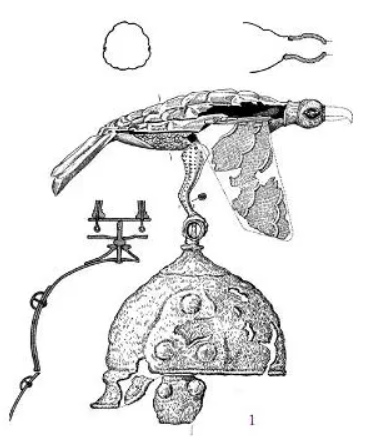
Although it is probably not suited for infantrymen. Finally this burial from Ciumesti is dated for La Tène C1 by Aurel Rustoiu, which put it straight to the second half of the 3rd century BC not the 4th. So it could fit for a Galatian noble.
1 hour ago, Ultimate Aurelian said:Is the Coolus Manheim (Bronze cap without cheekguards) accurate for the punic wars timeframe ?
Originally, there are two types of helmet with this round shape, the bronze cap without cheekguards you are describing:
The Coolus which is slightly lighter:
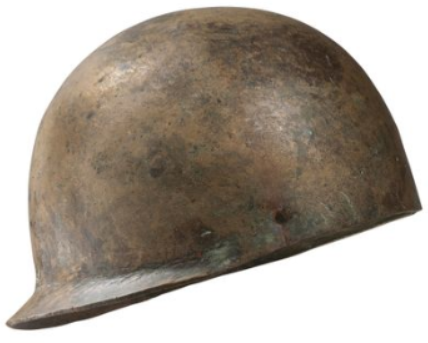
The Mannheim which is slightly heavier:
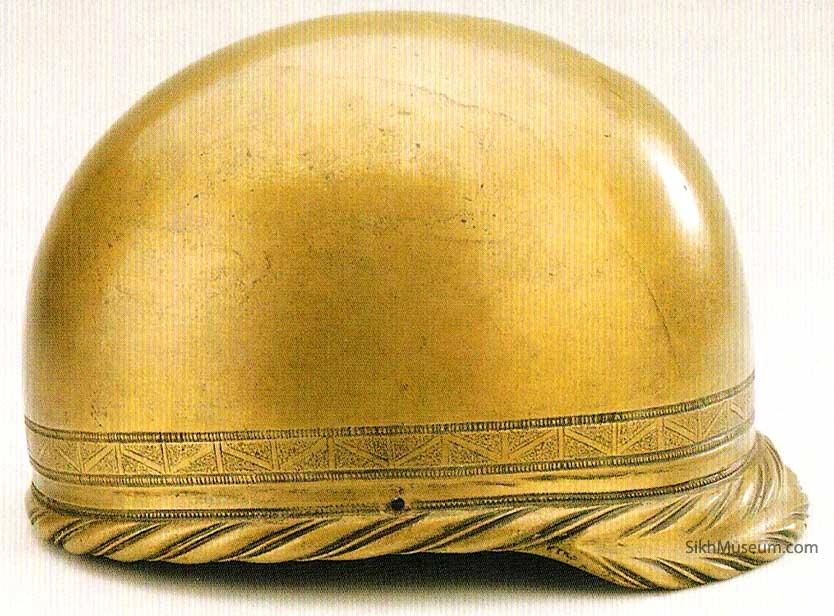
Both are attested for the 1st century BC. There was some debate about the origins of these helmets because they have been found in both Roman and Celtic contexts. Now the typology is mostly viewed as one, the Coolus-Mannheim, to differentiate it from the later Coolus helmets in use in the imperial legions. Recently a Coolus helmet has been found in Switzerland and clearly confirms that this kind of helmet is known in native Celtic context up to 120 BC. Recently it has been suggested that the Mannheim variant was something popularized by the Romans during the Gallic Wars (and probably already slightly before). A hypothesis suggests that Julius Caesar ordered these kinds of helmet from Gallia narbonensis and Gallia Cisalpina where the oldest heavier Mannheim helmets are found.
2 hours ago, Ultimate Aurelian said:Using this picture as guideline, may be a bit too old.
This picture is not that bad but it has a few issues. First of all, the way the helmets are presented is not suited for this kind of overview. The Celtic montefortino are in use from 400 to 150 BC approx. with a few evolution but not that much. Finally the Coolus cap is suggested to start around 200 BC, probably from the work of H.Russell-Robinson. However, this is a mistake from this author based on findings from Italy with little description (black market, 19th century archeology, private collection). He simply assumed from their shape and their technology that it could fit around the end of the 3rd century BC but recently this has been questioned especially by French and German archaeologists. The oldest reliable account is 120 BC in Switzerland.
-
[11] Thracas quoque rumpiae, ingentis et ipsae longitudinis, inter obiectos undique ramos impediebant.
-
14 hours ago, Ultimate Aurelian said:
Ptolemies:
-
Galatian Swordsman:
- Basic => No helmet / Trousers / Naked chest or tunic / no cape / Long oval shield with boss
- Advanced => Berru or montefortino / Trousers / Cape /Naked chest or tunic / Long oval shield with boss
- Elite => Ciumesti, bryastovets, montefortino or thracian / Trousers / Cape or no cape / Linothorax or Mail/ Long oval shield with shield boss and orle protection
The Galatians could be entirely naked in basic as well, since they are sometimes depicted like this in terracotta.
I would disagree with the Berru helmet since it is something found during the 5th century and the first half of the 4th century, while the Galatian migration started really in the beginning of the 3rd century. Probably that the most common Celtic helmets would have been the Eastern variant of the Celtic Montefortino series:
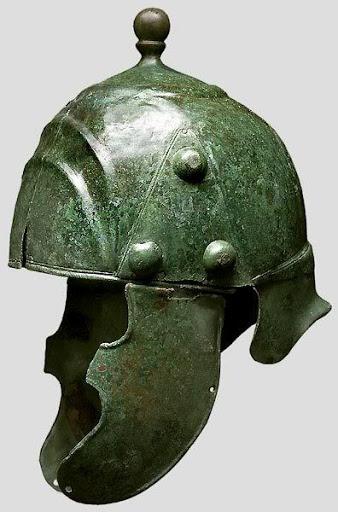
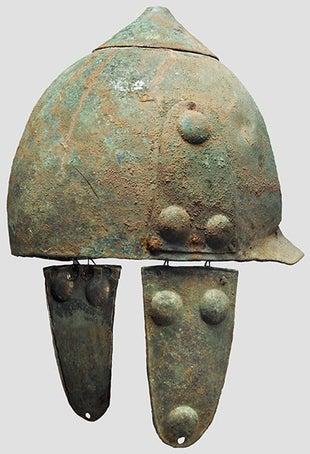
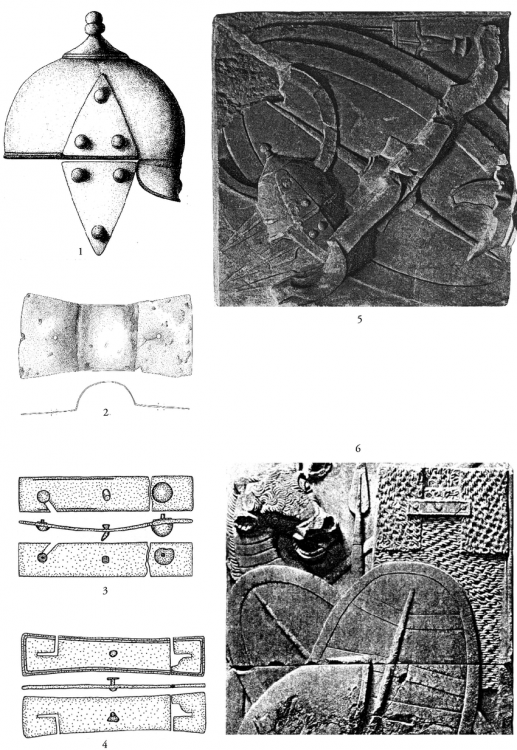
Finally it is also possible that Galatian elites used more Hellenistic equipment:
https://battleshields.tumblr.com/post/12433075574/galatian-shields-these-galatian-warriors-are
http://profesorjuliodapenalosada.blogspot.com/2015/12/le-soldat-lagide.html
15 hours ago, Ultimate Aurelian said:Carthaginians:
-
Gaulish Swordsman (Based on Narbonnian coast Gauls who traded with Greeks and Phoenicians):
- Basic => No helmet / Trousers / Naked chest or tunic / no cape / Long shield with boss
- Advanced => Berru or montefortino / Trousers / Cape / Naked chest or tunic / Long shield with boss
- Elite =>Boè or Port / Trousers / Cape or no cape / Leather Cuirass or Mail/ Long shield with shield boss and orle protection
-
Celtic Horseman (Cisalpine):
- Basic => No helmet / Trousers / Naked chest or tunic / no cape / Long shield with boss
- Advanced => Coolus, negau or montefortino / Trousers / Cape or no cape /Leather armor/ Long shield with boss
- Elite =>Port, ciumesti or coolus / Trousers / Cape or no cape / Leather Cuirass or Mail/ Long shield with shield boss and orle protection
The Boé, Port, Ciumesti and Coolus helmets are interesting but they are in use after the fall of Carthage (149 BC).
I think that it is possible to simply use different Celtic montefortino helmets, from simpler version to more decorated ones.
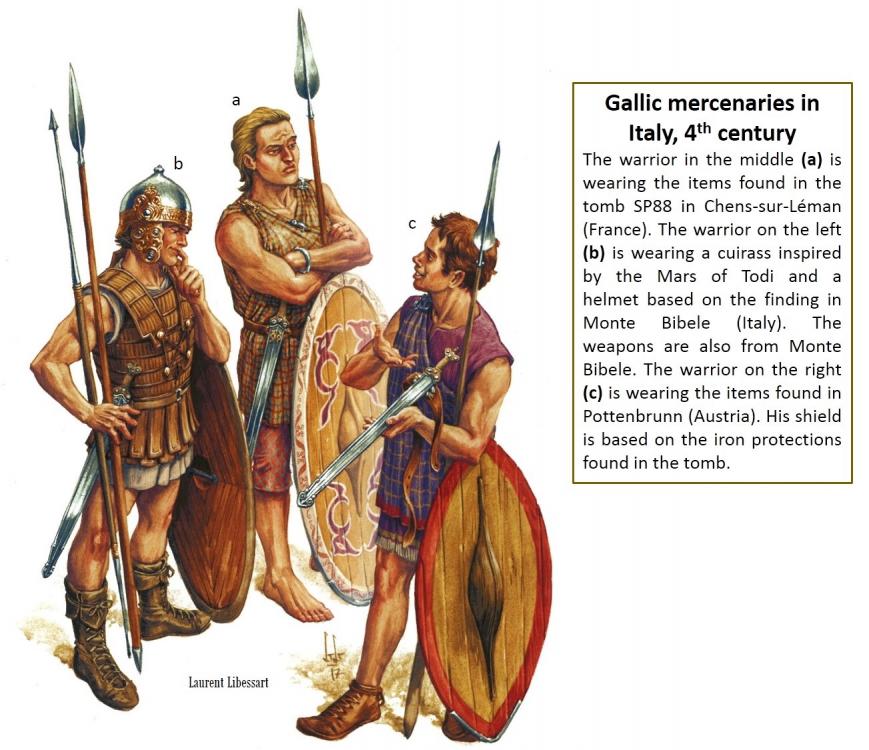
-
 1
1
-
Galatian Swordsman:
-
I am not sure about the Seleucids, if there is anything to back up this unit in their roster.
-
30 minutes ago, Ultimate Aurelian said:
Indeed, looking at how early germanics migrated from the north; you'd assume the northern region would be the one with the least celtic influence.
Actually, the area with the most Celtic influence are in Jutland and in Poland. Elbgermanen (Germans from the Elbe region) were the least influenced by the Celts during the Vorrömische Eisenzeit (pre-Roman Iron Age).
-
-
 3
3
-
 1
1
-
-
I would say yes.
-
13 hours ago, Ultimate Aurelian said:
This is centuries after that description but there are some phalerae from Thorsberg, don't look like Roman ones.
It is not impossible that something similar existed among Celts, decorated metallic plaques have been found. Although their real use is still unknown, the hypothesis of decorated items for body armors has been proposed. So it is plausible that northern Germanic population could have used them. The whole history of the Cimbri migration is a complex topic.
By the way thank you to propose and to research stuff for the Suebians. I appreciate, I am currently busy and I don't have the time to do it.
-
 1
1
-
-
-


.thumb.jpg.b21ca1d0c15fb56b42c39b25a0a40815.jpg)
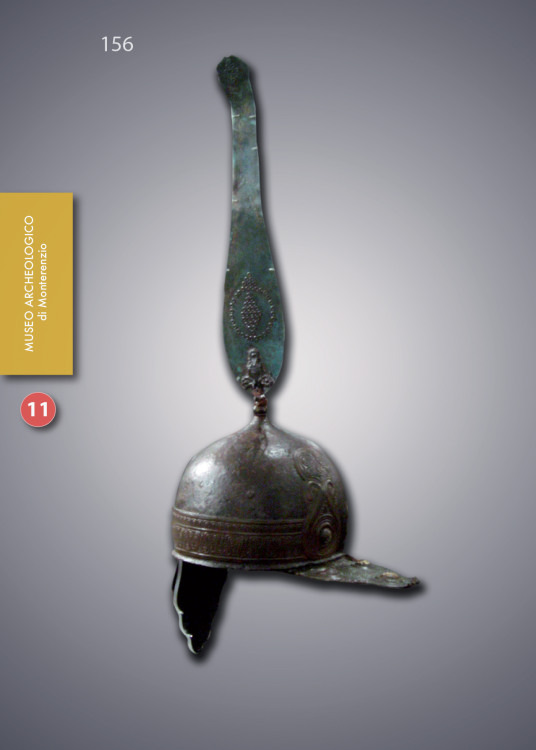
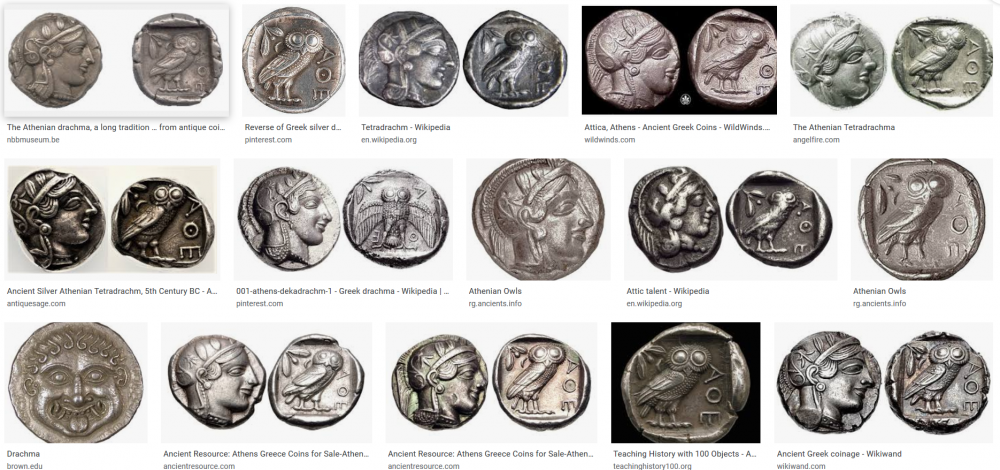
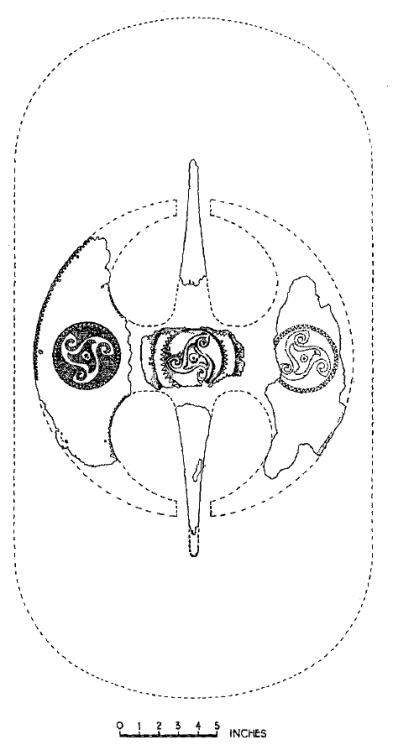
Ideas for New Civilizations [Core Game]
in General Discussion
Posted
@m7600
Don't take personally the previous messages from Lion.Kanzen. English is not his mother tongue, he didn't express well his intents.
He wasn't trying to be rude.